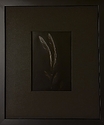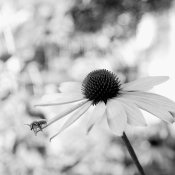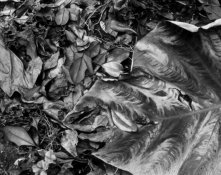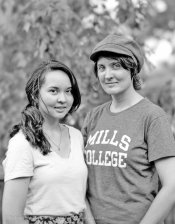You are using an out of date browser. It may not display this or other websites correctly.
You should upgrade or use an alternative browser.
You should upgrade or use an alternative browser.
Defender (aka Harvey's) 777
-
A
- Thread starter c6h6o3
- Start date
Recent Classifieds
-
For Sale SL66 150mm Lens with Leaf Shutter--2025 CLA
- Started by RJSPHD55
-
For Sale Gitzo Series 4 Lever Ball Head GH4383LR
- Started by RJSPHD55
-
For Sale Gitzo GT5541LS Tripod in Outstanding Condition
- Started by RJSPHD55
-
For Trade View camera magazine back issues
- Started by MTGseattle
-
Want to Buy WTB Gossen Multibeam
- Started by Disconnekt
Forum statistics
Thomas Bertilsson
Member
It's also a terrific semi-stand developer. Try rating your TMY or HP5+ rollfilm at 100 and giving it 24 min. at 72°F with a ten second agitation at 12 min.
That's good to know. Although I usually don't like the results from such minimal agitation it's sometimes useful.
I revise my statement above about 8m30s. Shot a roll at EI 250 in normal contrast, incident meter, and it required 10m00s developing time, agitating every 30s at 75*F temperature in order to print to my liking. It appears TMY-2 (EI 250) needs 9m30s, and Tri-X (EI 200) 9m00s. Fuji Neopan 400 seems to need less, although I've only done one roll, EI 250 @ 10 minutes, which was about 2 minutes too much. Next time 8m30s.
I've also run some Neopan 1600 (EI 800), at 7m00s and 75*F, which has produced some really great negatives. I might try EI 640 next time, though.
It appears that the 777 developer does not tolerate underexposure very well, and it really comes alive when shooting in medium contrast situations. It resolves things in the highlights in a way that I just love.
The reason for using all of the different types of films is that I was given a large amount, and I'm just using up some of the various films so I can settle back on HP5 / Tri-X, and I've got a fair bit of Acros too, which I will test soon.
Thomas Bertilsson
Member
It's been a couple of weeks now, and last weekend I ended up printing a lot of pictures to 16x20 size, (12x18" effective area from 35mm and 14" square from 6x6).
The way the negatives print is really impressive, even with as little testing as I have done. Mostly I printed from a roll of Neopan 1600 and a Delta 400 (35mm), but also some Neopan 400 in 120. For some reason the negatives appear to require far less darkroom gymnastics to print compared to other developers I have used. I target Grade 3 with 35mm film, and on one print I had to go up to Grade 4 and another one I burned in a couple of parts with Grade 5. But it's been remarkably close to straight printing, and I absolutely love the results.
I can't quite put my finger on it, but I still maintain that the magic is in the highlights. Acting foolishly aside, it's almost impossible to block up highlights. At the same time the shadows are compressed, so don't underexpose your film or you will have lots of 'black holes' in the prints.
This is one fine developer, and I'm pretty excited every time I get to develop film now. I almost shoot too much on purpose so I can process more.
The way the negatives print is really impressive, even with as little testing as I have done. Mostly I printed from a roll of Neopan 1600 and a Delta 400 (35mm), but also some Neopan 400 in 120. For some reason the negatives appear to require far less darkroom gymnastics to print compared to other developers I have used. I target Grade 3 with 35mm film, and on one print I had to go up to Grade 4 and another one I burned in a couple of parts with Grade 5. But it's been remarkably close to straight printing, and I absolutely love the results.
I can't quite put my finger on it, but I still maintain that the magic is in the highlights. Acting foolishly aside, it's almost impossible to block up highlights. At the same time the shadows are compressed, so don't underexpose your film or you will have lots of 'black holes' in the prints.
This is one fine developer, and I'm pretty excited every time I get to develop film now. I almost shoot too much on purpose so I can process more.

c6h6o3
Member
- Joined
- Oct 16, 2002
- Messages
- 3,215
- Format
- Large Format
I can't quite put my finger on it, but I still maintain that the magic is in the highlights. Acting foolishly aside, it's almost impossible to block up highlights. At the same time the shadows are compressed, so don't underexpose your film or you will have lots of 'black holes' in the prints.
I call this "compressing the scale from the bottom up". I second Tom's warning: do NOT underexpose with this developer.
Thomas Bertilsson
Member
I call this "compressing the scale from the bottom up". I second Tom's warning: do NOT underexpose with this developer.
That's a good way to put it.
While I haven't done any direct comparison to other developers, attached is an example of those wonderful highlights. The mid-tones are wonderfully detailed, full of contrast, while the shadows are deep and still sort of anchor the image. Maybe not the best example, but I was shooting and testing a fair bit.
This was shot on 120 Neopan 400, and EI 250 incident metering. Wish I would have given it a tad bit more, and held back development 10%.
Attachments
Thomas Bertilsson
Member
Evidently, Bluegrass makes and sells the replenisher also. Just ask when you place your order.
scheimfluger_77
Member
I had not heard of Defender 777 until seeing this thread. Having used a pinhole camera almost exclusively for the last several years I've been struggling with shadow detail and not blowing out highlights.
Add IR film to that mix and you compound the problem. It is possible to get good shadow detail on most of the Super pan films and a 720nm filter ... with enough exposure. You know what that does to IR highlights. Ever looking for the (mythical) "magic bullet," this developer sounds encouraging.
Add IR film to that mix and you compound the problem. It is possible to get good shadow detail on most of the Super pan films and a 720nm filter ... with enough exposure. You know what that does to IR highlights. Ever looking for the (mythical) "magic bullet," this developer sounds encouraging.
c6h6o3
Member
- Joined
- Oct 16, 2002
- Messages
- 3,215
- Format
- Large Format
Evidently, Bluegrass makes and sells the replenisher also. Just ask when you place your order.
Ellen told me that they have no intention of making the replenisher anymore. I asked.
Thomas Bertilsson
Member
Ellen told me that they have no intention of making the replenisher anymore. I asked.
And my friend Don Cardwell just ordered five gallon kits of replenisher. Go figure!
c6h6o3
Member
- Joined
- Oct 16, 2002
- Messages
- 3,215
- Format
- Large Format
That's a good way to put it.
While I haven't done any direct comparison to other developers, attached is an example of those wonderful highlights. The mid-tones are wonderfully detailed, full of contrast, while the shadows are deep and still sort of anchor the image. Maybe not the best example, but I was shooting and testing a fair bit.
This was shot on 120 Neopan 400, and EI 250 incident metering. Wish I would have given it a tad bit more, and held back development 10%.
What I've always liked about it are the rich grays.
Attachments
Richard Man
Subscriber
- Joined
- Sep 24, 2005
- Messages
- 1,312
- Format
- Multi Format
Quick note: I have been running the Jobo Multitank with ~1 liter of 777 stock on up to 6 sheets of 4x5. That's about as large a volume as I can do with the CPE-2+. The results are great. I do all my post processing on the computer, but really not much of any work has been done regarding exposure/curve:
HP5+

HP5+

Thomas Bertilsson
Member
What I've always liked about it are the rich grays.
Those are great examples of why I like this developer.
Thomas Bertilsson
Member
777 seems to be especially well suited to portraiture, for sure.
Looks like yoiu dropped some shadows out, not sure if it's intentional or not. I've noticed that 777 requires tons of exposure. Otherwise nice example.
Looks like yoiu dropped some shadows out, not sure if it's intentional or not. I've noticed that 777 requires tons of exposure. Otherwise nice example.
Quick note: I have been running the Jobo Multitank with ~1 liter of 777 stock on up to 6 sheets of 4x5. That's about as large a volume as I can do with the CPE-2+. The results are great. I do all my post processing on the computer, but really not much of any work has been done regarding exposure/curve:
HP5+

Richard Man
Subscriber
- Joined
- Sep 24, 2005
- Messages
- 1,312
- Format
- Multi Format
*click slide click* check again? 3 seconds work on Lightroom....
Thomas Bertilsson
Member
*click slide click* check again? 3 seconds work on Lightroom....
Sorry, are you referring to me? What do I need to do? Attached image is what I could do in Photoshop with respect to bringing up shadows. Not saying any of it is wrong to drop some shadows. Just that you did...
Hair on the side of the girl's face.
Attachments
Richard Man
Subscriber
- Joined
- Sep 24, 2005
- Messages
- 1,312
- Format
- Multi Format
Whoa! Do you have a calibrated monitor?! I do, and my prints match my monitor's. Your photoshopped is way too bright!
Or do you just use a standard Mac monitor?!
Or do you just use a standard Mac monitor?!
Thomas Bertilsson
Member
Whoa! Do you have a calibrated monitor?! I do, and my prints match my monitor's. Your photoshopped is way too bright!
Or do you just use a standard Mac monitor?!
I wasn't trying to make it look nice, and I am fully aware it's way too bright.
Was only looking at the shadows, and the shadows only. I brought up the values in the shadows to max to confirm that some of the shadows were missing, and that was not to prove anything wrong about your photograph (your photograph is nice!), only to support my findings that this developer needs film with quite a bit more exposure than just about any other developer I have tried. That's all.
I use a Mac Book Pro with retina display. Don't know if it's calibrated or not. Not something I care too much about.
JW PHOTO
Member
I wasn't trying to make it look nice, and I am fully aware it's way too bright.
Was only looking at the shadows, and the shadows only. I brought up the values in the shadows to max to confirm that some of the shadows were missing, and that was not to prove anything wrong about your photograph (your photograph is nice!), only to support my findings that this developer needs film with quite a bit more exposure than just about any other developer I have tried. That's all.
I use a Mac Book Pro with retina display. Don't know if it's calibrated or not. Not something I care too much about.
I see what you're talking about Tom. Under the hat bill and the young lady on the left has less or no texture to her hair on the right side near her cheek and forehead. Do you have to down-rate your film more than one stop with this stuff? JohnW
Thomas Bertilsson
Member
I see what you're talking about Tom. Under the hat bill and the young lady on the left has less or no texture to her hair on the right side near her cheek and forehead. Do you have to down-rate your film more than one stop with this stuff? JohnW
That's exactly what I mean, John.
I have concluded the following EIs with various films, incident metering:
Ilford FP4+ - EI 60
Kodak Tri-X 400 - EI 160
Ilford HP5+ - EI 200
Fuji Neopan 1600 - EI 640
That is a good bit below what I normally use with Xtol, which is a very different animal that yields gobs of shadow speed.
Please note that this is for enlarging on silver gelatin paper, Ilford MGIV, and my prints usually land at around Grade 3 with 35mm negs, and Grade 2.5 with 120 negs.
JW PHOTO
Member
That's exactly what I mean, John.
I have concluded the following EIs with various films, incident metering:
Ilford FP4+ - EI 60
Kodak Tri-X 400 - EI 160
Ilford HP5+ - EI 200
Fuji Neopan 1600 - EI 640
That is a good bit below what I normally use with Xtol, which is a very different animal that yields gobs of shadow speed.
Please note that this is for enlarging on silver gelatin paper, Ilford MGIV, and my prints usually land at around Grade 3 with 35mm negs, and Grade 2.5 with 120 negs.
Doesn't look like it would be a good combo for High School basketball games using Tri-X and no flash, but should be just fine for portraits, still-life and certain landscape shots. More like a specialty developer. JohnW
Thomas Bertilsson
Member
Doesn't look like it would be a good combo for High School basketball games using Tri-X and no flash, but should be just fine for portraits, still-life and certain landscape shots. More like a specialty developer. JohnW
If speed is what you need, forget it. D76 or Xtol is a much better option.
The developer was primarily formulated to solve a problem with high heat in portrait studios in the 1930s. Many of the studios also liked the resulting photographs a lot, and was used a lot, which is probably how the developer gained its reputation. I don't think Mr. Harvey had 35mm sports photography in mind when he formulated the developer...

JW PHOTO
Member
If speed is what you need, forget it. D76 or Xtol is a much better option.
The developer was primarily formulated to solve a problem with high heat in portrait studios in the 1930s. Many of the studios also liked the resulting photographs a lot, and was used a lot, which is probably how the developer gained its reputation. I don't think Mr. Harvey had 35mm sports photography in mind when he formulated the developer...
I don't know if he did or not, but I thought I read somewhere(Lord only knows where) that they used this developer for shooting night scenes from helicopters early on. Maybe that was with a special recording film or something I don't know. Not that I'm going to shoot from anything higher than a step ladder or even shoot HS basketball either. It was just a curiosity thing. JohnW
c6h6o3
Member
- Joined
- Oct 16, 2002
- Messages
- 3,215
- Format
- Large Format
I see what you're talking about Tom. Under the hat bill and the young lady on the left has less or no texture to her hair on the right side near her cheek and forehead. Do you have to down-rate your film more than one stop with this stuff? JohnW
The attached picture was taken with my old uncoated Dagor and developed in 777. I rated TMY at 200 and placed the deepest shadows in the interior of the chapel on Zone IV, so according to Adams I'm really rating it at 100. Even so, had I used a contrastier lens, such as my Red Dot Artar, I think I would've lost detail in the interior. The actual print has more contrast than this and the interior is much darker. It was lightened by the publisher (which ruins it, actually, especially the cliff walls which really glow in the flesh) but it demonstrates my point. When in doubt, give it more light. I was in no danger of blowing any highlights in this photo.
Attachments
Thomas Bertilsson
Member
The attached picture was taken with my old uncoated Dagor and developed in 777. I rated TMY at 200 and placed the deepest shadows in the interior of the chapel on Zone IV, so according to Adams I'm really rating it at 100. Even so, had I used a contrastier lens, such as my Red Dot Artar, I think I would've lost detail in the interior. The actual print has more contrast than this and the interior is much darker. It was lightened by the publisher (which ruins it, actually, especially the cliff walls which really glow in the flesh) but it demonstrates my point. When in doubt, give it more light. I was in no danger of blowing any highlights in this photo.
Great point! When I use my Leica Summitar lens, which is softer in contrast than my more modern lenses, I can usually uprate my film a little bit. That's one of the things I really like about that lens, which makes it almost as fast as a more modern 50mm f/1.4.

I actually haven't used that lens since I started with 777. Should give me back some of the speed I sacrificed.
I've also noticed about 777 that it does manage the highlights very very well, does not block them up, while also not looking compressed. It's pretty sweet.
Richard Man
Subscriber
- Joined
- Sep 24, 2005
- Messages
- 1,312
- Format
- Multi Format
Heh, the point is those shadow areas are IN THE SHADE. One can bring up the shadow any number of degrees, and in this particular case, it would not matter if Xtol is used!!! So using that (my) image as an example of 777 shadow behavior is incorrect, IMHO.
| Photrio.com contains affiliate links to products. We may receive a commission for purchases made through these links. To read our full affiliate disclosure statement please click Here. |
PHOTRIO PARTNERS EQUALLY FUNDING OUR COMMUNITY:  |














